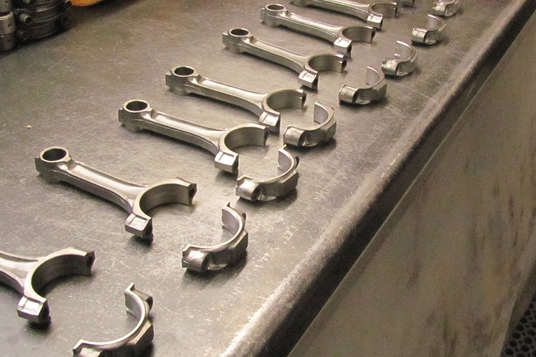When it comes to the mechanics of an engine, the orientation of each component is critical for smooth operation, particularly for a connecting rod. The question, “Which way does the connecting rod go?” is a common one, especially in the realm of engine assembly or repair. The simple answer is that the connecting rod’s orientation is determined by its design and the specific requirements of the engine. It is typically designed so that the larger end, known as the ‘big end,’ connects to the crankshaft, while the smaller end, or the ‘small end,’ attaches to the piston.
Decoding the Direction of a Connecting Rod
A connecting rod is a central component in various machinery types, predominantly in internal combustion engines. It is responsible for transferring motion from the piston to the crankshaft, converting the piston’s reciprocating motion into the crankshaft’s rotational motion. Correct positioning of the connecting rod is crucial for this transformation of motion to occur efficiently. The ‘big end’ of the rod, usually fitted with a bearing, attaches to the crankshaft, while the ‘small end’ connects to the piston.
The Role of Connecting Rod Orientation in Engine Performance
The orientation of the connecting rod directly influences the engine’s performance. An incorrectly installed connecting rod can lead to inefficient engine operation, excessive wear, or even catastrophic engine failure. Therefore, ensuring the proper direction of the connecting rod during engine assembly or repair is of utmost importance.

Factors Determining the Direction of the Connecting Rod
The design of the connecting rod and the engine’s specifications are key factors determining the rod’s orientation. Some connecting rods feature offset ends or have markings indicating the correct direction for installation. Moreover, the rod’s larger end typically features a removable cap to allow it to connect with the crankshaft. The rod’s smaller end, which is typically more rounded and has a wrist pin hole, connects to the piston.
Maintenance and Inspection of Connecting Rods
Regular inspection and maintenance of connecting rods are paramount to ensure their longevity and the overall health of the engine. Careful attention must be given during engine assembly or repair to ensure that the connecting rods are installed in the correct orientation. Failure to do so could lead to serious engine problems.
In essence, the question, “Which way does the connecting rod go?” is more than a simple query about assembly. It underscores the importance of correct installation and maintenance in ensuring the smooth operation and longevity of engines. Even seemingly small details, like the direction of a connecting rod, can have a significant impact on the performance and durability of an engine.
